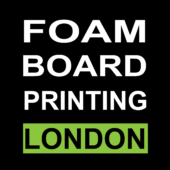How to Insulate a Metal Shed with Foam Board
Insulating a metal shed can significantly enhance its usability by maintaining a comfortable temperature, reducing moisture, and improving energy efficiency. Foam board insulation is a popular choice for this purpose due to its excellent thermal resistance, ease of installation, and affordability. Here’s a step-by-step guide to insulating a metal shed with foam board.
Materials and Tools Required
- Foam board insulation (preferably with a high R-value)
- Measuring tape
- Utility knife or a saw
- Adhesive (construction adhesive or spray adhesive)
- Aluminum foil tape or HVAC tape
- Safety gear (gloves, goggles, and dust mask)
Step-by-Step Instructions
- Preparation
- Clean the Shed: Begin by cleaning the interior surfaces of your shed. Remove any dirt, dust, or debris to ensure the adhesive sticks properly.
- Measure the Area: Measure the walls, ceiling, and floor of the shed to determine the amount of foam board insulation you will need. Ensure you account for doors and windows.
- Cutting the Foam Board
- Using a utility knife or a saw, cut the foam board insulation to fit the dimensions of the shed’s walls, ceiling, and floor. It’s crucial to get precise measurements to ensure a snug fit, which will maximize the insulation’s effectiveness.
- Installing the Insulation
- Walls: Apply adhesive to the back of the foam board and press it firmly against the shed’s walls. Start from the bottom and work your way up. Ensure that each piece is tightly fitted against the adjacent pieces to avoid any gaps.
- Ceiling: Insulating the ceiling follows the same procedure. Apply adhesive and press the foam board against the ceiling. This step is particularly important as heat rises, and a well-insulated ceiling will help retain warmth during colder months.
- Floor: While not always necessary, insulating the floor can further enhance the shed’s comfort. Lay the foam boards on the floor, securing them with adhesive.
- Sealing the Seams
- Use aluminum foil tape or HVAC tape to seal the seams between the foam boards. This will prevent air leaks and enhance the insulation’s effectiveness. Ensure all edges and corners are thoroughly taped.
- Finishing Touches
- Additional Layer (Optional): For added insulation, consider installing a second layer of foam board. Offset the seams of the second layer from the first to minimize thermal bridging.
- Covering the Insulation: Depending on the shed’s use, you might want to cover the insulation with plywood or drywall for a more finished appearance and to protect the foam boards from damage.
Conclusion
Insulating a metal shed with foam board insulation is an effective way to maintain a comfortable temperature and improve energy efficiency. By following the steps outlined above, you can achieve a well-insulated shed that is suitable for various uses, from storage to a workshop or even a small office. The key benefits include reduced heat loss in winter, cooler temperatures in summer, and a significant reduction in moisture and condensation issues. This project is relatively simple and can be completed with basic tools and materials, making it an excellent DIY project for those looking to enhance their shed’s functionality and comfort.
